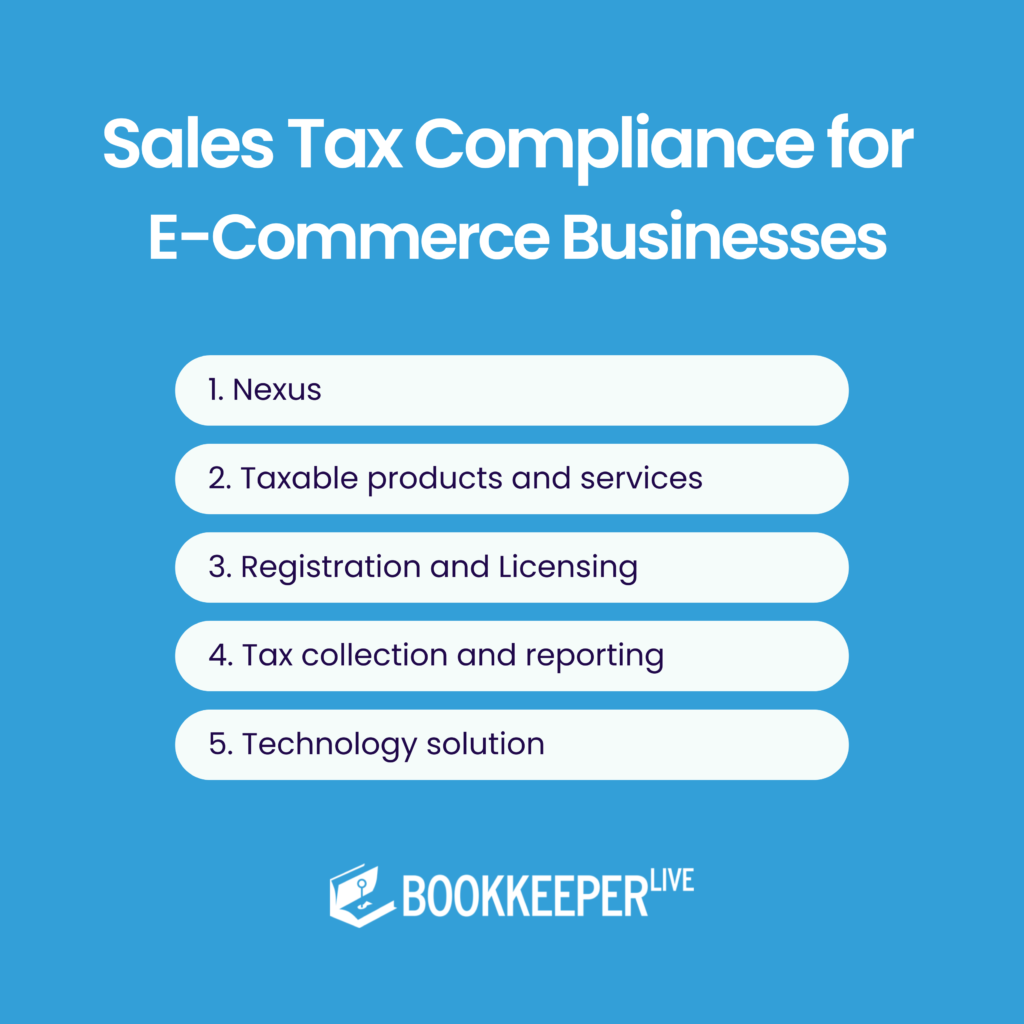
Running an online store across the United States is an exciting endeavor, but understanding sales tax regulations? Not so much. Navigating the intricate web of US sales tax laws is essential to keeping your business legally compliant. This blog will provide a clear and simplified explanation of the process, outlining when and where you need to charge sales tax, and how to manage it effectively.
The obligation to collect sales tax arises when your business has a nexus in a specific state. A nexus is your economic or physical connection to a state, signaling that you are “doing business” there.
Different states define nexus differently, which means your compliance obligations depend on a variety of factors.
Here are the key types of nexus that apply to eCommerce businesses:
To comply with sales tax rules, you need to identify where your business has nexus. Here’s how to get started:
*Alaska doesn't have state tax, only local.

If you’ve identified nexus in one or more states, follow these steps to ensure compliance:
To legally collect sales tax, you must first register for a state sales tax permit through the State Department of Revenue. Obtaining this permit is an essential step, as collecting sales tax without it can lead to legal issues, including accusations of tax fraud in some states. The registration process is straightforward, with many states offering online applications. Once you apply, you’ll typically receive your sales tax permit number immediately or within 10 business days for online submissions. If you opt for mail registration, the process may take 2-4 weeks.
To register, you'll need the following details:
Additionally, businesses can register in multiple states simultaneously through the SSUTA streamlined registration system but be aware that this might create tax obligations in states where you don’t have nexus. For more details, visit the SSUTA registration page.
Some states have specific “Notice and Report” laws for online sellers who don’t have a physical presence or nexus in the state. Under these rules, you may not need to register for sales tax, but you may still have use tax responsibilities. This includes informing certain customers that they are required to pay use tax to their state’s revenue office and reporting these customers (along with their tax obligations) to the state. If you use an eCommerce platform like Shopify, ensure it helps you stay compliant with current sales tax regulations.
Keep an eye on your sales in each state to track when you’re nearing a tax registration threshold. Once your sales exceed the threshold, you’ll need to register for sales tax and start collecting it. Being proactive can save time and ensure compliance.
Use tools like Quaderno to automatically monitor your sales and transaction volumes. These tools alert you when you’re close to a threshold and keep you updated on tax policy changes in the regions where you do business. Automation helps you stay compliant and reduces the risk of errors.
Managing sales tax manually can be overwhelming, but tools like automated tax calculators and reporting software can make a big difference. These platforms provide real-time tax rate calculations and generate detailed reports for easy filing.
If tax filings seem too complex to handle on your own, consider outsourcing to a professional tax service connected through these platforms.
Understanding and complying with US sales tax regulations is crucial for your eCommerce business to thrive. By identifying nexus, registering for permits, collecting the correct tax amounts, and remitting them on time, you can stay compliant and focused on growing your online store.
With the right tools and practices in place, managing sales tax can become just another part of your streamlined eCommerce operations.
1. How do I know if my business has nexus in a state?
To determine nexus, consider your physical presence, employee locations, sales volume, and online activities. Each state has specific rules, so it's essential to research state-specific laws or consult with a tax professional.
2. How do I register for a sales tax permit?
You typically need to register with the state's Department of Revenue. The registration process varies by state, but generally involves providing information about your business, such as your legal structure, address, and tax identification number.
3. How do I calculate sales tax?
Sales tax is calculated by multiplying the taxable amount of a sale by the applicable sales tax rate.
4. How often do I need to file sales tax returns?
The frequency of filing sales tax returns varies by state. It's typically quarterly, monthly, or annually.
BookkeeperLive provides affordable bookkeeping and accounting services tailored to your business goals.





No calls, No meetings, No spam. Get started with a free trial by filling out the form.
*NDA included for your data protection.
Copyright © 2025 BookkeeperLive. All rights reserved. Privacy Policy Terms of Use
Please visit our India site to see services designed for your country
Enter the code, fill out the form, and unlock financial clarity with a free trial.